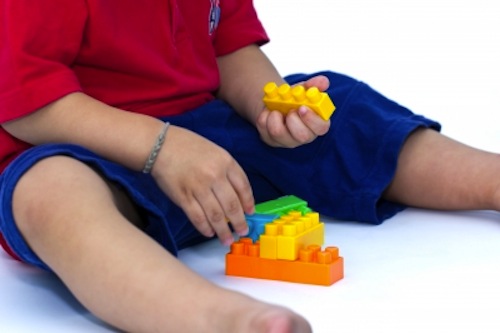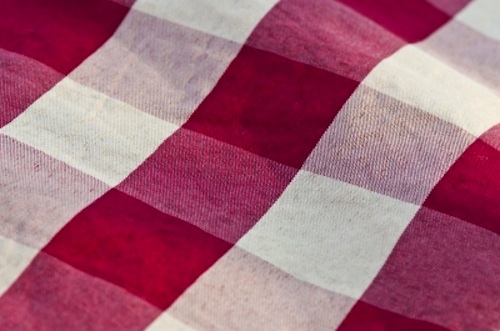How Parents Can Use CHALK Preschool
Whether your child is already enrolled in a separate preschool program, starting next year or learning at home until they begin kindergarten, the CHALK Preschool online curriculum can help children expand and enhance their early education for free. All you need is your computer, smartphone or tablet to enroll and get started.
The CHALK Curriculum
CHALK Preschool focuses on preparing preschoolers for kindergarten. Lessons revolve around learning numbers, letters, shapes, sizes, colors, pattern recognition, weather, days of the week and more. The best part? There’s constantly new, challenging material for your little one. With a new lesson list every day, your child can expand his or her knowledge by exploring new games, songs and activities.
The CHALK Learning Approach
Despite being an online program, CHALK Preschool is about much more than sitting in front of a screen, clicking a computer mouse. The curriculum is centered on hands-on learning, involving both indoor and outdoor play and discovery. From art projects to song and dance, CHALK gets little ones up and moving, learning through exploration, the way that they learn best.
Here’s how to use CHALK Preschool to enhance your child’s learning:
1. Enroll
To get started, all you need to do is enter your email information and your child’s name and birthday on CHALK’s website.
2. Select a lesson to focus on.
Choose a topic on the left hand side of the screen. You can opt for dailies, which changes every day, weather, literacy, math and science or art. Each comes with videos, games or activities. Some even feature all three.
3. Print off printables.
Next, check out the printables available on the left side of the screen, under the lesson options. Here you’ll find coloring sheets, graphs and more that your child can draw or write on.
4. Free play!
If your little one still wants to learn and you’ve already covered his or her daily lesson plan, click on the free play link on the top right of the screen. Here, you and your little one can watch videos and learn fun, educational songs to sing along with.
5. Stop by the Parent Portal.
This section of the website, located on the top right of the screen, is completely dedicated to parents like you. Here, you can learn more about the CHALK Preschool program and leave helpful feedback for the staff. You can also head to the advice corner to find helpful tips on everything from teaching about manners to helping smooth out the bedtime routine.
Arts Based Early Education
As a substitute teacher, I sure have encountered a lot of different education programs. I’ve been at big and small schools, public and private, and have taught early education through high school. While a one-off day at a school is usually quickly forgotten, getting to see (and briefly be a part of) a really impressive program is a treat!
Recently, I spent the day teaching for the Kaleidoscope Program at Settlement Music School in Philadelphia. My background (and my heart) is in Art Education, so I jump at any chance to work in an arts based early education environment – especially an award winning community based school in my own hood!
Throughout my day, I was excited to see young kids (pre-K) who were really getting a well rounded arts education! The kids in my art classes had obviously been exposed to the “elements of design”, and were comfortable with some fairly advanced color theory. The day I spent with them, we were working with hot and cool colors. The students definitely had both the knowledge and vocabulary to talk about their own and others’ art work.
I was also able to observe the Kaleidoscope Plus program, Settlement’s new after-school program. Much like the day program, Kaleidoscope Plus has a major focus on the arts – visual arts, music, theater and dance. In my experience, there are some major benefits to presenting art, music, and movement in an integrated curriculum. Students gain skills in all areas – learning principles of art, developing fine motor skills, enhancing their listening skills and music making abilities, and moving their bodies in controlled and intentional ways.

Above, students are enthusiastically engage in a game of “Freeze Dance Party “ – accompanied by live music! Even some of the shyest kids were socializing in this dance game!
This cross-disciplinary approach allows broader topics and themes to be explored. Over the course of this school year, Kaleidoscope Plus kids will be learning and creating around three major themes – myself, my community, my world. While I was visiting, students we’re focusing on “myself”. In the choice-based art classroom, this meant learning about our bodies and making a larger-than-life skeleton. (I do love a good 3-d project!)
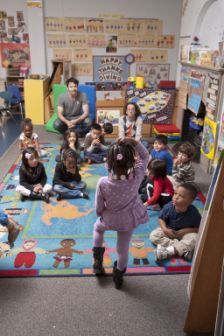
On the more “dramatic” side of things, kids learned about storytelling, which culminated in mini-performances to rapt audiences of their peers. It’s obvious that these guys are confident in front of a group!
Here, kids participate in favorite game “mirror” – learning about the expressions they can make with their faces.
Overall, it was charming and fun to spend an afternoon with kids that were really learning – while not losing sight of the main focus: play. It was awesome to see kids really interacting, creating, and expressing themselves all afternoon. I found myself wishing I had been in a program like this when I was that little!
More information on Kaleidoscope Plus (including their mission statement, and enrollment pages) is available here. You can still enroll or start in January, after the holidays!
Educational Activities for Children with Down Syndrome
Children with Down syndrome develop at a slower rate than most children without Down syndrome. They face challenges, such as being slower to learn how to talk and care for themselves. This certainly doesn’t mean these things are impossible. They just take a bit longer and some extra dedication. Here are some fun, educational activities for children with Down syndrome that will help make learning fun and a little less frustrating for little ones.
Use visuals to learn sounds.
Often, visual learning works best for children with Down syndrome. Sometimes, sign language can help little ones communicate and learn verbal language. You can either learn actual sign language or invent your own. For example, maybe touching the mouth represents hunger.
Take turns.
Teaching a child with Down syndrome to take turns can amplify learning experiences. Communication relies heavily on taking turns, having a listener and a speaker, but sometimes this concept doesn’t come naturally. Demonstrating this turn taking and even verbally communicating “OK now it’s my turn” can help the learning process happen a bit faster.
Use repetition to your advantage.
Studies show that kids with Down syndrome usually need at least a 100-word vocabulary before they start transitioning from one-word statements to multi-word thoughts. Repetition can help accelerate learning to speak. Think of it as an add-on game. If the child says, “Car,” say, “Car. Fast car.”
Sources:
-“Down Syndrome” Kids Health: http://kidshealth.org/kid/health_problems/birth_defect/down_syndrome.html
-“12 Booster Activities for Kids with Down Syndrome” Parents.com: http://www.parents.com/health/down-syndrome/booster-activities-for-kids-with-down-syndrome/
-“Down Syndrome Learning Activities” Pinerest: http://www.pinterest.com/trudycallan/down-syndrome-learning-activities/
-“Top Five Instructional Strategies for Students with Down Syndrome” Special Ed Post: http://specialedpost.com/2013/01/31/top-five-instructional-strategies-for-students-with-down-syndrome/
-Photo courtesy of kdshutterman,/freedigitalphotos.net
Play Based Learning
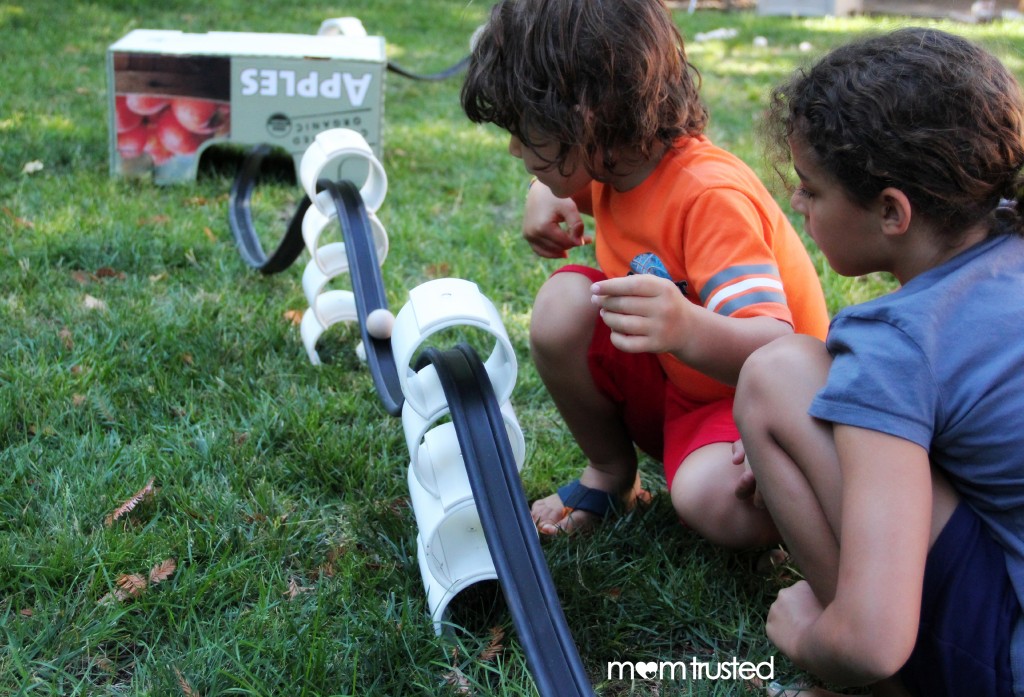
As teachers, care providers and parents, you know better than anyone that kids learn best through hands-on or play based learning. Our friends at Kodo Kids know that hands-on play is not only extremely educational, but also the most fun way to learn. That’s why they produce products that promote investigation and exploration.

As childhood expert Bev Bos would say, “If it’s not in the hand, it’s not in the head.” At Mom Trusted, we agree with Kodo Kids’ learning philosophy. Open-ended play is an important learning style for children of all ages. It helps create a deep understanding of the material introduced to them. This hands-on, play approach is especially important during early education, when children are just starting to discover and create their learning style, along with the world around them.

Products from Kodo Kids range anywhere from Digger Kits, designed to encourage outdoor play and learning by digging, burying and sifting through sand and soil, to Kodo Clay, an all-natural product meant for art and expression. There’s a magnetic filling kit that teaches kids about magnetism and iron particles. Kodo Kids even has Pump Works, a kit of water tubes that lets children test out their engineering and water pumping skills.
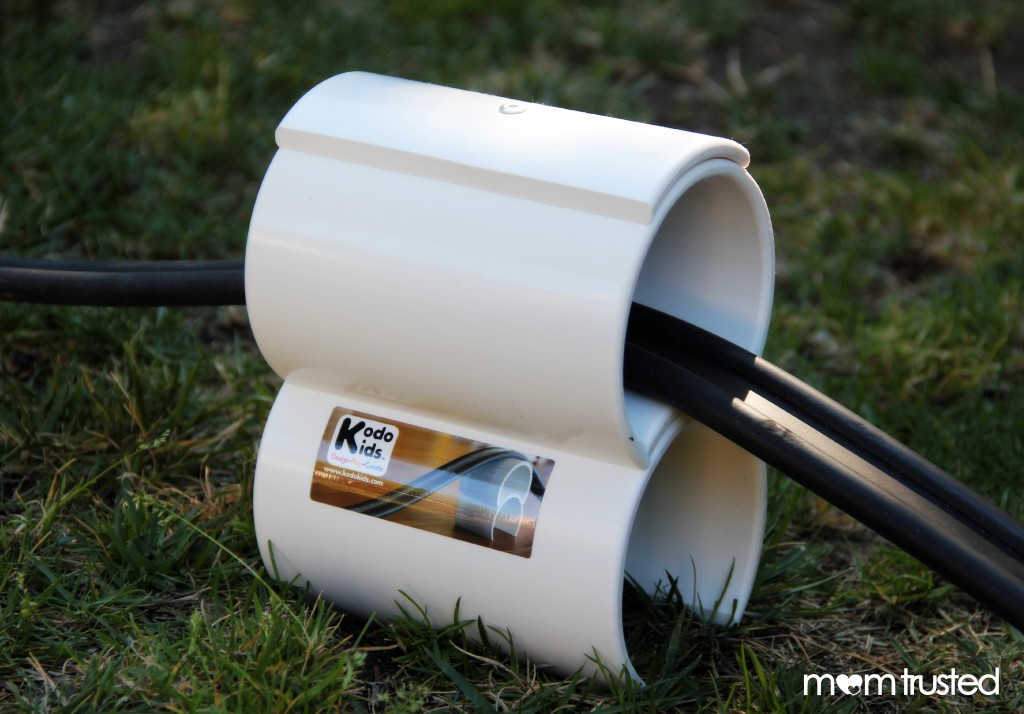
How do we know Kodo Kids’ products are great? They sent us some and we loved them! With a wide variety of tools, toys and gadgets, any teacher, child care provider, or parent is sure to find something right up their alley that suits their individual teaching or parenting style. Visit Kodo Kids’ products for yourself today to see just how great hands-on learning can be!
Free Preschool: Yes, It really exists!

With the steep costs of preschool, many parents are searching for lower costing options or even eliminating pre-k altogether. Those in Los Angeles County may have a more affordable option at their fingertips. The Un Mundo de Amigos Preschool offers free and affordable preschool to kids in the LA county.
Un Mundo de Amigos offers free half-day preschool without any financial restrictions. The only requirements are that the families live in LA County and children fall within the birthday perimeters. Un Mundo de Amigos does, however, still offer affordable childcare to families of kids who are younger than four or those who’d like their kids to participate in the full-day program. Families who fall into those categories are welcome to opt for the program’s private pay option, which costs $5 per hour, still much lower than most other pre-k programs.
Laurie Peterson, who had previously worked in the business of PG golf tournaments, founded Un Mundo de Amigos after seeing the joy her own son got from starting school. “I realized that not every child had had the same beginnings as he has had,” said Peterson. “And yet every parent loves their child as much as I love him.”
Most of it is funded through the Los Angeles Universal Preschool, a non-profit dedicated to increasing preschool affordability and access in the LA area. In 1999, as a result of a 50-cent tax law on cigarettes and other tobacco products in California, more funding was put toward early childhood development. Eighty percent of the new revenue was distributed among counties in California and backs organizations such as LAUP, working to improve the lives and education of children from the age of birth to five years old.
The program has been going strong and just graduated its fifth preschool class. Un Mundo de Amigos enrolls about 130 students each year and this year is no different. With the school year officially beginning in September, Un Mundo de Amigos has a handful of spots available in its free program and only one private place still open.
For more information about Un Mundo de Amigos Preschool, click here.
Approved for All Ages: Childproofing Around Your Home
Guest Post by: Angelo DiGangi of Home Depot
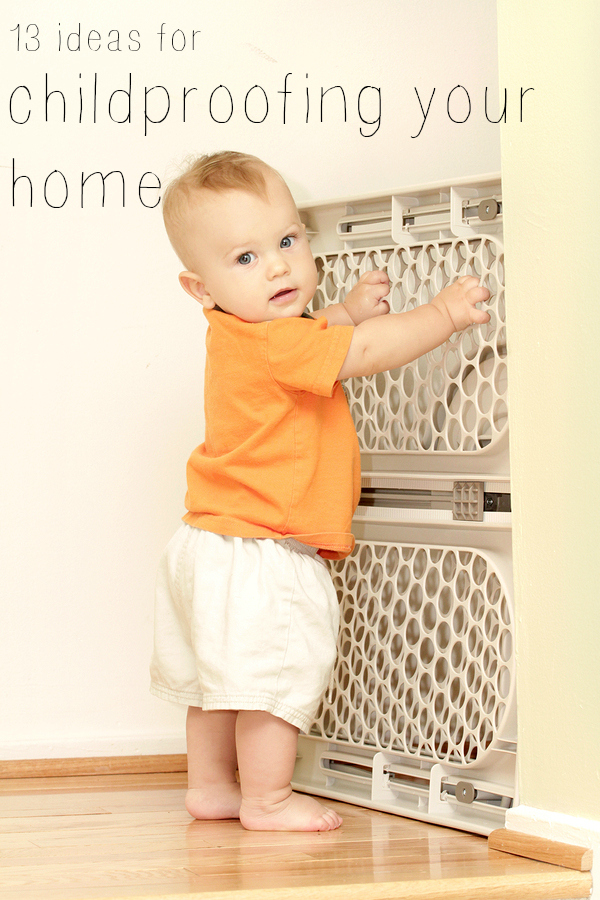
Have you ever heard a new mother joke that she would rather her baby not begin walking, because then she’ll have to chase him around? It’s true that carrying our children ensures that we know exactly where they are at all times, but even when a child begins to explore the world, there are ways to make that world safer.
Whether you are at home with small children of your own or you are looking for the best ways to childproof your childcare center or local business, there are ways you can organize and safeguard kitchen cabinets, drawers and other places where you might not want tiny hands.
Locks of Love
One of the most important ways to childproof your home is to keep kitchen and bathroom cabinets and drawers that contain harmful or dangerous items off limits.
First, get organized.
Don’t put things like poisonous cleaning products in the lower kitchen cabinets, if possible. Try storing plastic food containers, plastic dishes, dishtowels and other harmless items for areas within the reach of small hands.
Check out what’s available.
When it comes to latches and locks to keep your kitchen items safe, there are plenty of options. Hardware stores, specialty shops and super stores are all fine places to peruse options for safety latches. There are two main types of latches for cabinets and drawers.
- Magnetic locks – These often require a little more carpentry skill than some other choices. Once installed, only an adult with the proper “key” can unlock the cabinet.
- Hook Locks – These devices are simple to install. They consist of a bendable piece of plastic that hooks cabinet or drawers closed.
Elsewhere in the Kitchen
If you have harmful products stashed under a sink, those may be the first items you think about inside a kitchen – and with good reason! But there are other ways to keep your toddler safe in the most popular room of the house.
Use the back section of the stovetop.
If you’re boiling water or cooking, use the back burners. Keep the handles turned away from any side where your toddler might be able to reach.
Keep countertops clear.
Make sure appliances, knife sets and other kitchen gadgets are not at the edge of the counters, but pushed back and away from reach.
Elsewhere in the House
Latch your toilet seat.
More toddlers drown inside toilets than you could ever imagine. Keep your toilet seats closed and latched to prevent this.
Use an anti-scalding device for sinks and showers.
Don’t let your child turn on the hot water and burn himself. Install a device on the showerhead and faucet that prevents the water from becoming too hot. Most of these devices function by automatically reducing the water flow when it becomes a certain temperature.
You can also go a step further and install an anti-scalding device on your actual hot water heater. A professional plumber is usually the one to do this.
Cover outlets.
To avoid shock, cover all unused outlets with a safety cap.
Leave hairdryers and other bathroom appliances unplugged.
Even adults get burned sometimes – so remember to unplug any bathroom appliances and put them away after use.
Other Precautions for Safety
Use doorknob covers and baby gates.
If there are rooms in your house where you’d just rather not have children, try a simple doorknob cover or a baby gate to deter your toddler from entering.
Cover furniture edges with “bumpers.”
Children are prone to running around, falling and bumping their heads. You can prevent accidents involving the furniture by covering the corners with “bumpers” that soften the edges.
Avoid creating a “ladder” for windows.
Kids love to climb. That said, keep all furniture away from high windows, which can pose a falling hazard should your child climb onto the windowsill. Screens do not provide sufficient protection.
Keep cords out of reach.
Cords – whether from appliances or blinds – can strangle a child easily. Make sure your toddler cannot wrap him or herself in loose cords.
Keep bookcases and other structures sturdy.
Secure bookcases and any other furniture that could fall over onto a child by using brackets and anchors. Keep heavier items at the bottom to prevent a top-heavy structure.
Ensuring that your home is childproof is no easy task, but there are plenty of items to assist in your venture. And, other parents and visitors will feel at ease knowing that you’ve taken the time to create a safe environment for little people.
Angelo DiGangi is a Home Depot “on the floor” sales associate at a suburban Chicago store. His writing interests include providing kitchen design ideas for homeowners on the Home Depot website.
Creative Picnic Food for Kids
Are you looking to take your children on a summer picnic? Whether you’re munching at the park, in the woods or in your backyard, eating outside is always fun for children. Looking to spice up some snacks? Check out these creative ideas for picnic food for kids:
Ants on a log
Stick with this classic favorite. Wash and chop some celery, spread some peanut butter on each stick and drop a few raisins on top. For a fun twist, make fire ants on a log by using dried cranberries instead of raisins.
Melon straws
Cut small squares or scoop small spheres of watermelon, honeydew and cantaloupe. Then, string the melon chunks onto colorful straws. Kids will love the new, fun way to eat fruit.
ABC pasta salad
Make your favorite pasta salad, but replace the regular noodles with ABC noodles. You’ll have a lunch that’s both tasty and educational!
Sandwich shapes
Make some simple meat and cheese, peanut butter and jelly or veggie sandwiches, but make them in shapes. Use a few large cookie cutters to cut the bread and sandwich toppings. This is also a favorite for kids who don’t want to eat the bread crust.
Cucumber cups
Chop a fat cucumber into two to three inch thick slices. Use a melon scooper to scoop the inside out and fill them with a mixture of hummus and chopped bell peppers.
Pickle rolls
For a leaner option than the classic ham and pickle rolls, use turkey. Spread low fat cream cheese on thin slices of turkey and roll a pickle in the middle. Then chop into bite-sized pieces. To make the snack even healthier, ditch the pickles. Try replacing them with other crunchy veggies such as strips of bell pepper or cucumber.
Water bottles
An afternoon in the sun means higher risk of dehydration so remember to pack plenty of water before heading out.
Sources:
-“Picnic Food for Kids: Quick and Easy No Fuss Foods Kids Will Love” Hubpages: http://gabrielwilson.hubpages.com/hub/Picnic-food-for-kids
-“Picnic Food Kids will Love: Pack a Safe and Healthy Basket” parents.com: http://www.parents.com/recipes/familyrecipes/quickandeasy/picnic-food-kids-will-love-pack-a-safe–healthy-basket/#page=1
-“Picnic Ideas Gallery” Spoonful: http://spoonful.com/recipes/picnic-gallery
-Photo courtesy of Michelle Meiklejohn/freedigitalphotos.com

